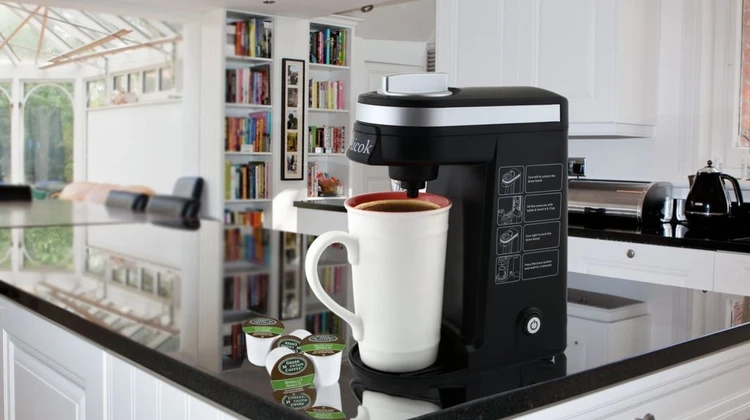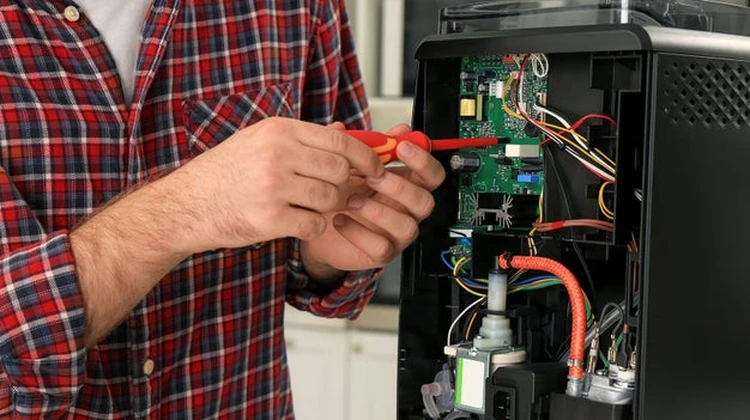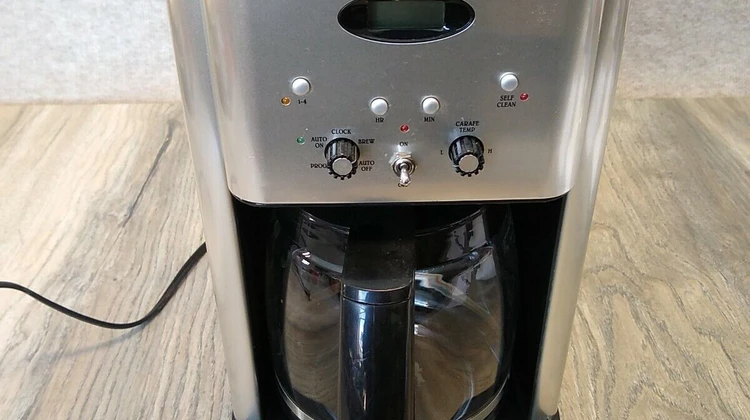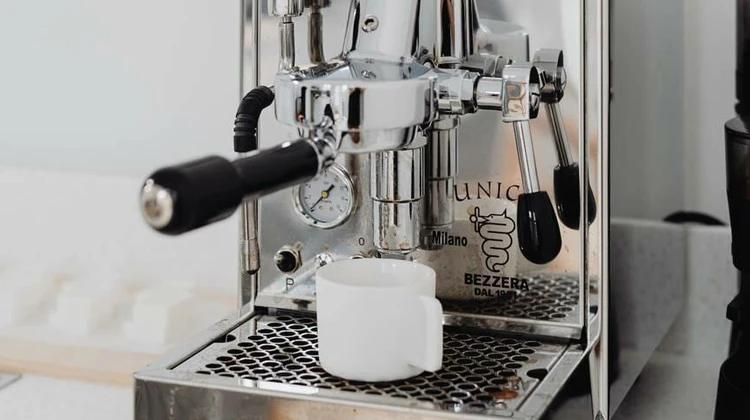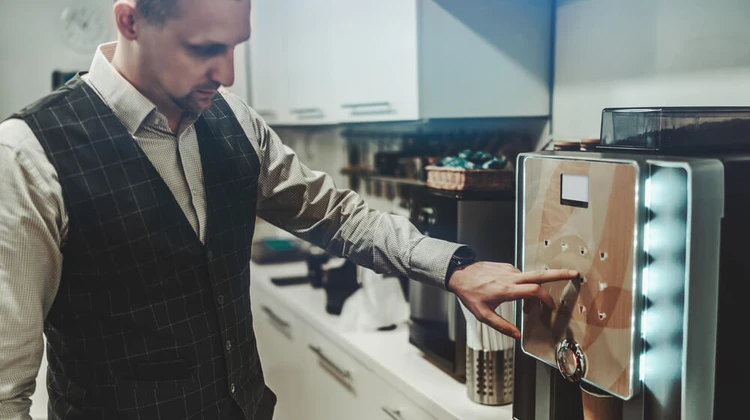Disclaimer: As an Amazon Associate, I earn commission from qualifying purchases.
K-Cups are small, plastic containers filled with ground coffee, designed for use in single-serve coffee makers. Introduced by Keurig in the late 1990s, K-Cups revolutionized the way people brew coffee at home and in offices.
Each K-Cup contains a filter and a pre-measured amount of coffee, ensuring a consistent brew every time. The process is simple: insert the K-Cup into the coffee maker, close the lid, and press the brew button. Hot water is then forced through the K-Cup, extracting the coffee and delivering it directly into your cup.
The convenience of K-Cups lies in their ease of use and minimal cleanup. There’s no need to grind beans, measure coffee, or clean up filters. This makes them ideal for busy individuals who want a quick, hassle-free cup of coffee. However, the environmental impact of K-Cups is a significant concern. The plastic containers are not biodegradable, and while some brands offer recyclable options, many still end up in landfills.
Benefits of Using K-Cup Coffee Makers
K-Cup coffee makers offer several benefits that make them popular among coffee enthusiasts:
- Convenience: With K-Cups, brewing a cup of coffee is as simple as inserting a pod and pressing a button. There’s no need for grinding beans or measuring coffee, making it a quick and easy process.
- Speed: K-Cup coffee makers can brew a cup of coffee in under a minute, making them ideal for busy mornings or quick coffee breaks.
- Variety of Flavors: K-Cups come in a wide range of flavors, from traditional blends to specialty and flavored coffees. This variety allows users to explore different tastes without committing to a whole bag of beans.
- Consistency: Each K-Cup contains a pre-measured amount of coffee, ensuring a consistent brew every time. This eliminates the guesswork involved in measuring coffee grounds.
- Minimal Cleanup: Since K-Cups are self-contained, there’s no need to clean filters or deal with coffee grounds. This makes cleanup quick and easy.
However, it’s important to note the environmental impact of K-Cups. The plastic containers are not biodegradable, and while some brands offer recyclable options, many still end up in landfills. Additionally, the cost per cup can be higher compared to traditional brewing methods.
Types of Coffee Makers Compatible with K-Cups
Several types of coffee makers are compatible with K-Cups, each offering unique features and benefits. Here’s a comparison of some popular options:
Keurig Models
Keurig is the pioneer of K-Cup technology and offers a wide range of models. Keurig machines are known for their reliability and ease of use. Popular models include the Keurig K-Classic, Keurig K-Elite, and Keurig K-Mini. These machines offer features like programmable settings, strength control, and compatibility with various K-Cup sizes.
Cuisinart Models
Cuisinart also offers coffee makers compatible with K-Cups. Their models, such as the Cuisinart SS-10 and SS-15, are known for their durability and additional features like temperature control and auto-off. Cuisinart machines often come with a larger water reservoir, making them suitable for households with multiple coffee drinkers.
Other Brands
Other brands like Hamilton Beach and Bunn also offer K-Cup compatible machines. Hamilton Beach models are known for their affordability and simplicity, while Bunn machines are praised for their speed and reliability. These brands provide a range of options to suit different budgets and preferences.
Top Keurig Models for K-Cups
Keurig offers a variety of models that are compatible with K-Cups. Here are some top Keurig models and their unique features:
Keurig K-Classic
The Keurig K-Classic is a popular choice for its simplicity and reliability. It features a 48-ounce water reservoir, allowing you to brew multiple cups before refilling. The machine offers three brew sizes: 6, 8, and 10 ounces. It’s a great option for those looking for a straightforward and easy-to-use K-Cup coffee maker.
Keurig K-Elite
The Keurig K-Elite is a more advanced model with additional features like strength control and temperature control. It has a 75-ounce water reservoir and offers five brew sizes, making it suitable for larger households. The K-Elite also includes a hot water on demand feature, allowing you to use it for tea or other hot beverages.
Keurig K-Mini
The Keurig K-Mini is a compact and portable option, perfect for small spaces or travel. It brews one cup at a time and has a removable drip tray to accommodate travel mugs. The K-Mini is a great choice for those who want a space-saving and affordable K-Cup coffee maker.
Other Brands That Use K-Cups
In addition to Keurig, several other brands offer coffee makers compatible with K-Cups. Here are some notable options:
Cuisinart
Cuisinart offers several models that are compatible with K-Cups, including the SS-10 and SS-15. These machines are known for their durability and additional features like temperature control and auto-off. Cuisinart machines often come with a larger water reservoir, making them suitable for households with multiple coffee drinkers.
Hamilton Beach
Hamilton Beach provides affordable and reliable K-Cup compatible machines. Their models, such as the FlexBrew, offer features like adjustable cup rests and programmable settings. Hamilton Beach machines are a great option for those looking for a budget-friendly K-Cup coffee maker.
Bunn
Bunn is known for its speed and reliability, and their K-Cup compatible machines are no exception. Models like the MCU Single Cup Multi-Use Home Coffee Brewer offer versatility, allowing you to brew K-Cups, ground coffee, or tea. Bunn machines are a good choice for those who value speed and flexibility.
How to Choose the Right K-Cup Coffee Maker
Choosing the right K-Cup coffee maker depends on your specific needs and preferences. Here’s a step-by-step guide to help you make an informed decision:
Step 1: Determine Your Budget
Set a budget range for your K-Cup coffee maker. Prices can vary significantly based on features and brand. Determine how much you are willing to spend and look for models within that range.
Step 2: Consider Brew Strength
If you prefer stronger coffee, look for models that offer strength control settings. Some machines allow you to adjust the brew strength to suit your taste.
Step 3: Evaluate Additional Features
Decide on the additional features you need. Some models come with features like temperature control, auto-off, and programmable settings. Consider which features are important to you and look for models that offer them.
Step 4: Check Water Reservoir Capacity
If you have a larger household or drink multiple cups of coffee a day, a larger water reservoir can be convenient. Look for models with a water reservoir that suits your needs.
Step 5: Read Reviews and Compare Models
Before making a purchase, read reviews from other users and compare different models. Look for models that have good ratings and positive feedback from users.
Maintenance Tips for K-Cup Coffee Makers
Proper maintenance is essential to keep your K-Cup coffee maker running smoothly. Here are some maintenance tips to ensure optimal performance:
Cleaning the Machine
Regularly clean your coffee maker to remove mineral buildup and ensure it runs efficiently. Use a mixture of water and white vinegar to descale the machine. Run the mixture through the machine as you would with a K-Cup, and then run several cycles of plain water to rinse it out.
Cleaning the Exit Needle
The exit needle, which punctures the K-Cup, can become clogged with coffee grounds over time. Use a paper clip or a similar tool to clear any blockages. Regularly inspect and clean the needle to prevent clogs.
Cleaning the Drip Tray
The drip tray can accumulate coffee residue and water. Remove the drip tray and wash it with soap and water. Ensure it is completely dry before reassembling.
Regular Descaling
Descaling your coffee maker helps remove mineral deposits that can affect its performance. Follow the manufacturer’s instructions for descaling, usually involving a descaling solution or a mixture of water and vinegar.
Environmental Impact of K-Cups
The environmental impact of K-Cups is a significant concern. The plastic containers are not biodegradable, and while some brands offer recyclable options, many still end up in landfills. Here are some ways to mitigate the environmental impact of K-Cups:
Use Reusable K-Cups
Reusable K-Cups allow you to use your own ground coffee while still enjoying the convenience of a K-Cup coffee maker. These reusable cups can be filled with your favorite coffee grounds and used multiple times, reducing waste.
Recycling Programs
Some brands offer recycling programs for K-Cups. Keurig, for example, has a Grounds to Grow On program that allows users to return used K-Cups for recycling. Check if your preferred brand offers a similar program and participate to reduce waste.
Choose Eco-Friendly Options
Look for K-Cups that are made from recyclable or compostable materials. Some brands offer eco-friendly options that are better for the environment. Research and choose brands that prioritize sustainability.
Best Practices for Using K-Cup Coffee Makers
To get the most out of your K-Cup coffee maker, follow these best practices:
Preheat the Machine
Preheating your coffee maker ensures that the water is at the optimal temperature for brewing. Run a cycle of hot water through the machine before inserting the K-Cup.
Use Fresh Water
Always use fresh, filtered water for brewing. The quality of water can significantly affect the taste of your coffee. Avoid using tap water, which may contain impurities that can alter the flavor.
Store K-Cups Properly
Store your K-Cups in a cool, dry place away from direct sunlight. This helps maintain the freshness and flavor of the coffee.
Clean Regularly
Regular cleaning and descaling ensure that your coffee maker runs efficiently and produces the best-tasting coffee. Follow the maintenance tips outlined above to keep your machine in optimal condition.
Common Issues and Troubleshooting
Even the best K-Cup coffee makers can encounter issues. Here are some common problems and troubleshooting tips:
Machine Won’t Brew
If your coffee maker won’t brew, check the water reservoir to ensure it has enough water. Also, inspect the exit needle for any clogs and clean it if necessary. Ensure the machine is properly plugged in and that there are no power issues.
Weak or Watery Coffee
If your coffee tastes weak or watery, try using a smaller brew size. This concentrates the coffee and makes it stronger. Also, ensure that the K-Cup is properly inserted and that the machine is not overfilled with water.
Machine Leaks Water
If your coffee maker is leaking water, check the water reservoir and drip tray for any cracks or damage. Ensure that all parts are properly assembled and that there are no obstructions in the water flow path.
Alternatives to K-Cups
While K-Cups offer convenience, there are alternatives that can be more eco-friendly and cost-effective. Here are some options to consider:
Coffee Pods
Coffee pods are similar to K-Cups but are often made from biodegradable or compostable materials. They offer the same convenience as K-Cups but with a smaller environmental footprint.
Capsules
Capsules are another single-serve option that are often made from aluminum, which is recyclable. They offer a wide range of flavors and strengths, similar to K-Cups.
Reusable Filters
Reusable filters allow you to use your own ground coffee while still enjoying the convenience of a single-serve machine. These filters can be filled with your favorite coffee grounds and used multiple times, reducing waste.
Future Trends in Single-Serve Coffee
The single-serve coffee market is continually evolving, with new trends and innovations emerging. Here are some future trends to watch for:
Eco-Friendly Options
As environmental concerns grow, more brands are focusing on eco-friendly options. Look for single-serve coffee makers and pods made from recyclable or compostable materials.
Smart Coffee Makers
Smart coffee makers are becoming increasingly popular. These machines can be controlled via smartphone apps, allowing you to customize your brew and schedule brewing times. Some models even integrate with smart home systems for added convenience.
Specialty Brews
The demand for specialty brews, such as cold brew and nitro coffee, is on the rise. Expect to see more single-serve coffee makers that offer these specialty options, allowing you to enjoy a wider range of coffee beverages at home.
FAQs
What are the most durable K-Cup coffee makers?
The most durable K-Cup coffee makers are typically those from well-known brands like Keurig and Cuisinart. Models such as the Keurig K-Elite and Cuisinart SS-10 are praised for their reliability and longevity. These machines are built with high-quality materials and offer robust features that ensure they last for years with proper maintenance.
How often should I clean my K-Cup coffee maker?
It is recommended to clean your K-Cup coffee maker at least once a month to remove mineral buildup and ensure optimal performance. Regular cleaning involves descaling the machine with a mixture of water and vinegar, cleaning the exit needle, and washing the drip tray. More frequent cleaning may be necessary if you use hard water or notice a decline in performance.
Can I use reusable K-Cups in any coffee maker?
Reusable K-Cups are designed to be compatible with most K-Cup coffee makers. However, it’s important to check the specifications of your coffee maker to ensure compatibility. Some machines may have specific requirements or limitations, so always refer to the manufacturer’s guidelines before using reusable K-Cups.
What are the best eco-friendly K-Cup options?
The best eco-friendly K-Cup options include those made from recyclable or compostable materials. Brands like San Francisco Bay Coffee offer compostable K-Cups, while Keurig’s Grounds to Grow On program allows users to recycle used K-Cups. Additionally, using reusable K-Cups is an excellent way to reduce waste and be more environmentally friendly.
How do I troubleshoot a K-Cup coffee maker that won’t brew?
If your K-Cup coffee maker won’t brew, start by checking the water reservoir to ensure it has enough water. Inspect the exit needle for any clogs and clean it if necessary. Ensure the machine is properly plugged in and that there are no power issues. If the problem persists, consult the manufacturer’s troubleshooting guide or contact customer service for further assistance.
Can I use ground coffee in a K-Cup coffee maker?
Yes, you can use ground coffee in a K-Cup coffee maker by using a reusable K-Cup filter. These filters allow you to fill them with your favorite ground coffee and use them in your K-Cup coffee maker. This option is more eco-friendly and cost-effective compared to using pre-filled K-Cups.
Conclusion
In conclusion, K-Cup coffee makers offer a convenient and efficient way to brew coffee at home. By choosing the right model and following best practices for maintenance and use, you can enhance your kitchen functionality and reduce waste.
While K-Cups have their environmental drawbacks, opting for eco-friendly alternatives and proper recycling can mitigate these issues. Whether you choose a Keurig, Cuisinart, or another brand, a K-Cup coffee maker can be a valuable addition to your kitchen, providing quick and delicious coffee every time.

